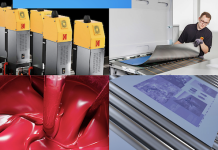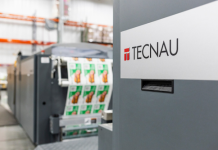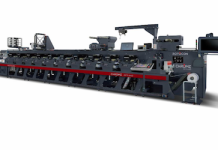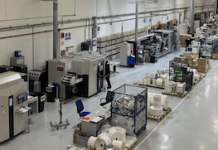Kaunain Shahidi, Business and Technology Contributing Editor, Packaging MEA and writing for drupa, says that in print and packaging, sustainability matters more than one thinks.
For anyone who listens to the word ‘sustainability’, a very special kind of sympathetic emotion gets evoked, and we do get connected with all the positive aspects or meaning of this word, which is not just a buzzword anymore, but has become a driving force of multiple economies including print and packaging. From the perspective of the common man, the most general understanding of this magical word is ‘to preserve the natural resources’.
From the printing and packaging industries perspective, tremendous developments have been made, and over the past few years, the fraternity has succeeded in implementing multiple sustainable concepts by means of innovative materials, machinery solutions and technical adaptations with a reduced use of natural and other resources.
As far as the origin of sustainability is concerned, it’s not a new concept for humanity. Back in 1713, it was Hanns Carl, who was the Head of the Royal Mining Office in Saxony, Germany, who came up with the idea of using a word with the objective of finding the details of a potential shortage of timber, which was the important resource of the time. Carl had proposed to harvest the wood only when the replacement would be available by new growth. He used the German word ‘Nachhalten’ (sustained) to describe forestry practices. Later on, with the addition of another German word, ‘Entwicklung’, we got the term ‘Nachhaltige Entwicklung’ (sustainable development).
Fast forward to 2023, and climate change is the single biggest health threat humanity is facing. The impacts are already visible through air pollution, disease, poor physical and mental health, extreme weather, increased hunger, and poor nutrition in various places, especially where people cannot grow agriculture or find foods.
Climate change refers to the change in the global climate, which is an interconnected system of sun, earth, and oceans, rain, wind, forests, deserts, and savannas, including everything we humans do. Scientists have found various compelling evidence of climate change, including greenhouse gas emissions, mainly atmospheric CO2 and global temperature, changes in sea level, the expanse of ice, the fossil record, and the distribution of species. This data shows a strong correlation between CO2 levels and global warming.
Experts say that if we are serious about stopping the inevitable disastrous effects of climate change on our planet earth, we must minimise the increase in global temperature (warming), which means an immediate and very significant reduction in global greenhouse gas emissions with at least a 43% reduction by 2030.
The million-dollar question is: ‘What can we do about rising temperatures? Well, there is no single or simple solution to this humongous task. According to the Organisation for Economic Co-operation and Development (OECD) guidelines, solutions can be found in finding possibilities in the removal of environmentally damaging subsidies, including fossil fuels, taxes on CO2 and methane gas emissions, collaborative innovation, and support for green technologies. Considering the seriousness of the issue of climate change and its impact, other than the 17 Sustainable Development Goals (SDGs) of United Nations Development Programme (UNDP), various international organisations at different levels have initiated multiple concepts, including Net Zero, Carbon Neutrality and ESG. All these are directly or indirectly related to the larger scope of sustainability. But more needs to be done and all regions of the world need to contribute.
As far as Middle East and North Africa (MENA) is concerned, from a climate hazards perspective, the region is considered one of the most sensitive geographical areas and is facing the headwinds of climate-related challenges, including extremely high temperatures, limited agricultural lands, and water scarcity. On top of that, its population is growing fast, while the GCC states generate among the highest per capita levels of carbon emissions in the world and export large quantities of fossil fuels.
In spite of all the challenges involved in controlling the effects of climate change, the major economies of MENA have pledged to reach net-zero emissions by at least 2060. Various initiatives for controlling emissions, reducing flaring of natural gas, increasing energy efficiency, etc. are being considered with all seriousness, and many other steps are being taken through innovative solutions and new technologies with an emphasis on valorising carbon while focusing on the circular economy.
The UAE is developing a major carbon capture and storage (CCS) project, which is the first in a planned series of similar projects in the country. It is expected that the 2023 UN Climate Change Conference, COP28 (Conference of Parties), which is hosted by the UAE in December this year, will amplify climate action, and serve as a platform for innovative solutions to further drive transformations towards sustainability in the region.
Various local brand owners and packaging manufacturers have already started multiple initiatives to curb the challenges with the focus of meeting the net zero targets, which are well published in their sustainability reports. As reported, Tetra Pak, one of the leading suppliers of packaging materials in the region, reached 80 percent renewable electricity in their operations by doubling solar photo-voltaic capacity and reducing 36% of GHG emissions as compared to the 2019 baseline.
As per the latest Sustainability Report of Almarai, the leading food and beverage company in MENA, the company has the target of preventing 9000 metric tons of waste by 2025, and they have already achieved a total of 6456 metric tons to date. In 2022, the company removed 713 metric tons of plastic and 74 annualised metric tons of paper weight. As part of the packaging design process, Almarai makes a conscious decision in the initial phases to address whether packaging is necessary, and they also consider using recycled materials to encourage circular economy thinking in packaging designs.
In the midst of various sustainability programmes, initiatives and agendas, experts have started asking another million dollar question: ‘Is the concept of Sustainability enough to manage the challenges the world is facing?’ Instead of doing less damage to the environment, what else is possible to explore and find out to manage and protect the health of ecological systems through a design thinking approach?
Most of the practices we are doing under the name of sustainability are mostly focused on attempting to reduce the damage caused by the overexploitation and use of natural resources. The question we all need to ask is: is that enough? Or is there something more to be done?
Experts say that the climate crisis is not a scientific problem that can be solved only by technology. It is a problem created by humans by not aligning with nature in terms of our lifestyle designs. Technologies and systems can play a limited role. We need to have a paradigm shift in our attitude, our lifestyles, and our ways of interaction with nature by bringing elements of respect and compassion for nature and its creation. We need to look beyond sustainability and start thinking about redesigning our systems.
Printing is an energy-intensive industry, and relying on wood as one of the raw materials has a unique set of problems, including high water consumption, solid waste production, and air pollution. I do not comment on plastic, which has its own reputation. Collectively, we all need to look into our system and its design so that we can improve the way we operate in a more sustainable manner, considering the holistic view of all the stakeholders involved in the print and packaging value chain.
Here comes the importance and role of drupa, which offers a great opportunity for the printing industry fraternity to come together on a single platform, discuss and exchange thoughts and ideas, and evaluate the current practices to redesign the systems for a better future with the focus on minimising the impact of any action on the environment while considering employment, income, society, and the local economy.
Thinking holistically, since each company, industry, and region face unique challenges. When developing an action plan for sustainability, it’s important to focus on cultures, mindsets, and a futuristic approach with complete seriousness. Well thought and integrated collaboration with the use of the latest transformative technologies is very much required.
Since sustainability has a strong connotation of future matters, it is equally important for all decision-makers to look into the current design of our education system, as providing students with the knowledge and skills to embrace sustainable habits is the very first step towards building a greener future. If required, relevant and regional climate education curriculums must be developed. Younger generations must have a comprehensive understanding of what climate change is, its challenges, and the various roles to be played in protecting the environment and mitigating all the associated risks. They must also be equipped to work in the green sector, as this is urgent to transform innovative thoughts and ideas into a new reality.
The UAE has already taken a positive step in this direction, and recently, the Ministry of Education signed the Green Education Partnership with UNESCO and UNICEF to spearhead a world-class climate education program across schools and universities in the country.
When we reflect our concern towards sustainability as a professional, it is equally important to look within as an individual as well. We shall not forget that we all have certain responsibilities towards our planet. Based on our lifestyle, each and every one of us has our own unique carbon footprint. Through our choices that we make from morning until we hit the bed, we make an impact on our environment. It’s time for self-introspection as well. We need to check the place where we live, our food choices, the number of gadgets, transportation, shopping habits, travels, vacations, and many more things that are very subjective but worth pondering.
Well, if you take a pause and look around the whole ecosystem of nature, the wonder of design comes to mind, as design is a core concept that is responsible for curating the world we live in, and it is done so beautifully and perfectly by the universe. But if we look at what we, the humans, have done through the designs of our lifestyles and systems, we are certainly not reciprocating as expected to protect and preserve the wonderful creation of nature. We need to redesign our lifestyles and the systems that we have got ourselves trapped in.
It is estimated that a short email from one laptop to another emits 0.3g of CO2e. Hmmmm, can we think up to this level and make some conscious choices? Certainly, sustainability matters more than what we think, and it’s high time we think more deeply and take quick action. We are running out of time. Planet Earth, the only one, needs our help and commitment to deploy changes in real time.
DRUPA
https://www.drupa.com/





















